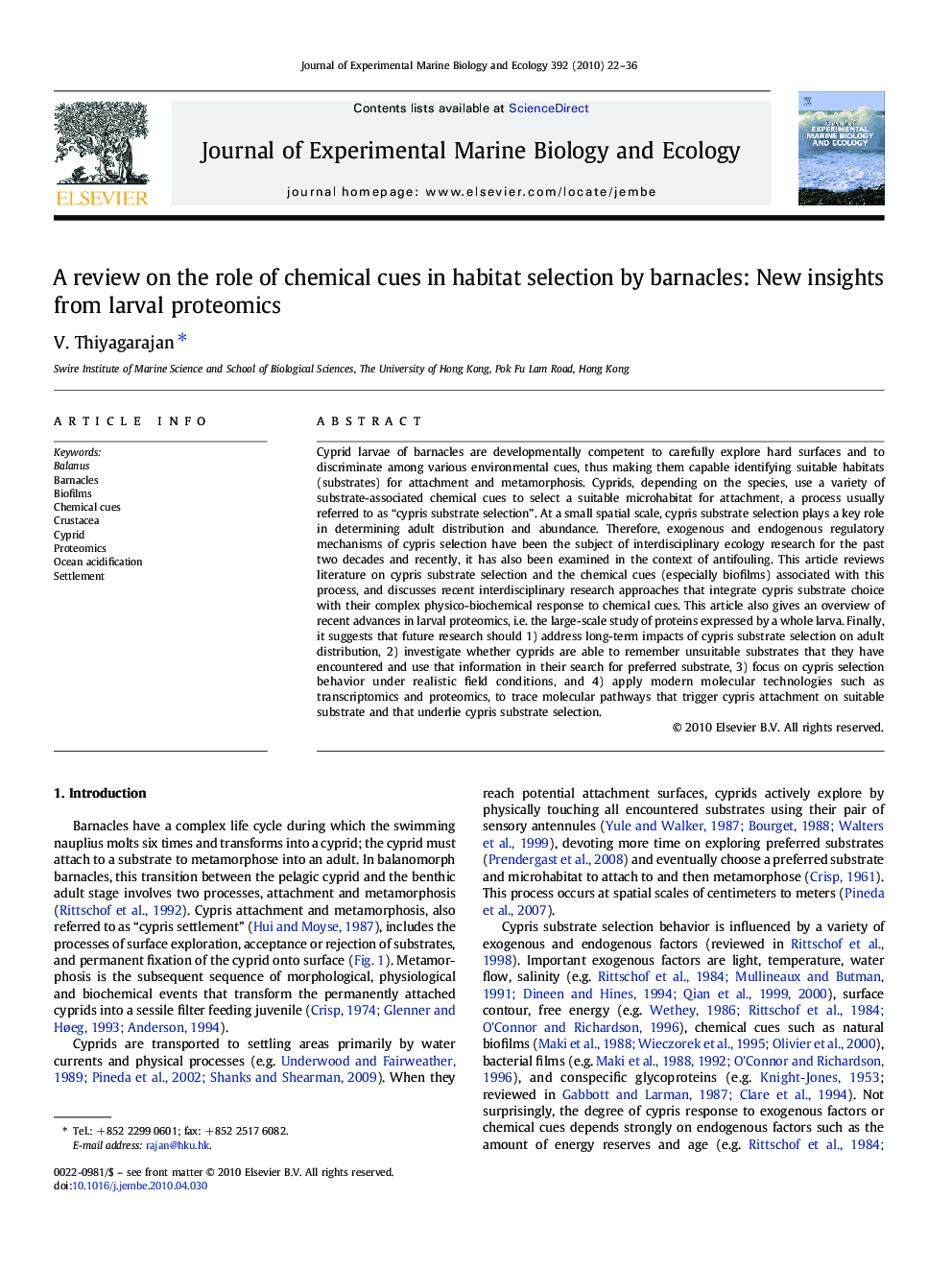| کد مقاله | کد نشریه | سال انتشار | مقاله انگلیسی | نسخه تمام متن |
|---|---|---|---|---|
| 4396550 | 1618468 | 2010 | 15 صفحه PDF | دانلود رایگان |

Cyprid larvae of barnacles are developmentally competent to carefully explore hard surfaces and to discriminate among various environmental cues, thus making them capable identifying suitable habitats (substrates) for attachment and metamorphosis. Cyprids, depending on the species, use a variety of substrate-associated chemical cues to select a suitable microhabitat for attachment, a process usually referred to as “cypris substrate selection”. At a small spatial scale, cypris substrate selection plays a key role in determining adult distribution and abundance. Therefore, exogenous and endogenous regulatory mechanisms of cypris selection have been the subject of interdisciplinary ecology research for the past two decades and recently, it has also been examined in the context of antifouling. This article reviews literature on cypris substrate selection and the chemical cues (especially biofilms) associated with this process, and discusses recent interdisciplinary research approaches that integrate cypris substrate choice with their complex physico-biochemical response to chemical cues. This article also gives an overview of recent advances in larval proteomics, i.e. the large-scale study of proteins expressed by a whole larva. Finally, it suggests that future research should 1) address long-term impacts of cypris substrate selection on adult distribution, 2) investigate whether cyprids are able to remember unsuitable substrates that they have encountered and use that information in their search for preferred substrate, 3) focus on cypris selection behavior under realistic field conditions, and 4) apply modern molecular technologies such as transcriptomics and proteomics, to trace molecular pathways that trigger cypris attachment on suitable substrate and that underlie cypris substrate selection.
Journal: Journal of Experimental Marine Biology and Ecology - Volume 392, Issues 1–2, 31 August 2010, Pages 22–36